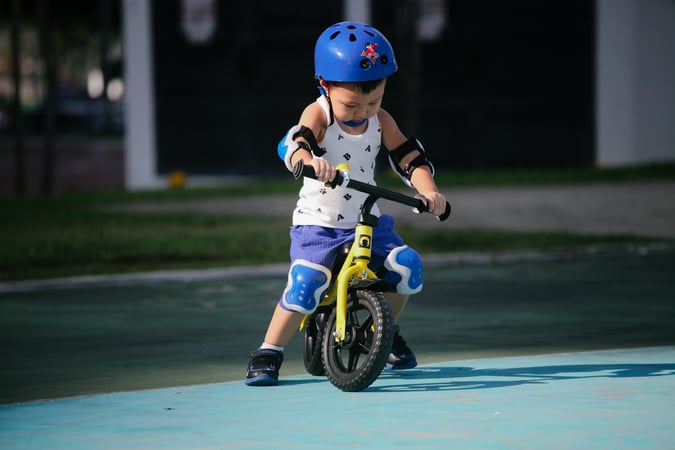Basic Rules of Exercise for Children

How much exercise
In general, children above six years old should get a total of at least one hour of exercise a day. This can be broken down into shorter intervals to cater to shorter attention spans.
When it comes to organised or team sports, the general rule is that the number of hours a week should not exceed the child's age.
Types of exercises
It's important to ensure your child engages in the three different types of exercise: aerobic, strength-training and weight-bearing. These exercises focus on different areas and engaging in all three will ensure that your child reaps the maximum benefits of exercise. Aerobic exercises focus on training stamina while strength-training and weight -bearing focus on building strong muscles and bones.
Keeping exercise safe for your child
- Have proper warm-ups and cool-downs
The importance of warm-up and cool-down routines cannot be overstated. Getting the body warmed up and ready before exercise reduces the risk of injury significantly, as does cooling down. You can make boring warm-up and cool-down sessions more fun by playing some of your child's favourite tunes!
- Wear the right attire
Always ensure your kids are in proper exercise attire from head to toe before starting on any exercise. The right kind of clothes will minimise discomfort due to sweating and heat, so invest in quality dri-fit clothing. Shoes are of utmost importance because the right shoes can prevent injury and even facilitate exercise, so don't skimp when it comes to buying sports shoes!
- Stay hydrated
Bring along lots of water with your child whenever you bring him or her out for exercise, and also ensure they drink up an hour before exercise, so their body is well-hydrated. Injuries such as heatstroke can happen as a result of dehydration and can turn your child off from future exercise sessions.
- Have rest days
Lastly, rest days are crucial to prevent your child from overexerting his or her muscles and bones. Exercising on strained muscles increases the risk of injury and muscle damage, so always give your child rest days even if they protest! Fun alternatives include taking a leisurely stroll by the beach or just nestling up with a fun stay-at-home story.
In a nutshell, physical activity is the gateway to optimising a child's development in many ways. The benefits of physical activity will follow a child through their growing years all the way to adulthood, so start engaging your child in exercise as soon as you can! If you are unsure of how to structure workouts or plan games, don't hesitate to get help from the sports experts at our Active Health Labs. Children are naturally fun-loving and vivacious creatures all you need to do is to flip the right switch and stand back for the fireworks!





![ActiveSG Academies and Clubs Logo (Solid Colour)[8647]](https://www.activesgcircle.gov.sg/hs-fs/hubfs/ActiveSG%20Circle%202023Theme/images/ActiveSG%20Academies%20and%20Clubs%20Logo%20(Solid%20Colour)%5B8647%5D.png?width=150&height=65&name=ActiveSG%20Academies%20and%20Clubs%20Logo%20(Solid%20Colour)%5B8647%5D.png)




-01.png?width=200&height=141&name=Team%20Singapore%20Logo%20(Red)-01.png)







